


MAGAZINE Connect 2022: ISSUE FOUR • THE PUBLICATION OF CAI- GREATER INLAND EMPIRE WHAT’S INSIDE CALIFORNIA REDISTRICTING: HOW AND WHY IT IS IMPORTANT IDENTIFYING WITH LEGISLATORS CRISIS: CALIFORNIA COMMUNITY ASSOCIATION INSURANCE RESERVES & INFRASTRUCTURE
Avalon is an accredited management company that has provided exceptional service experiences to homeowners’ associations for over 35 years.


Combining in-depth industry knowledge, innovative technology, and a homeowner focused management approach, we can help your community thrive.
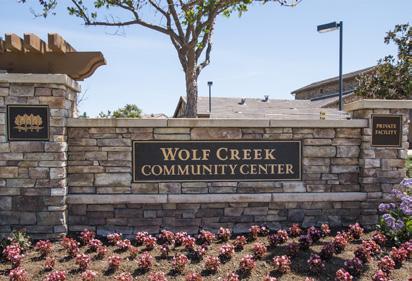
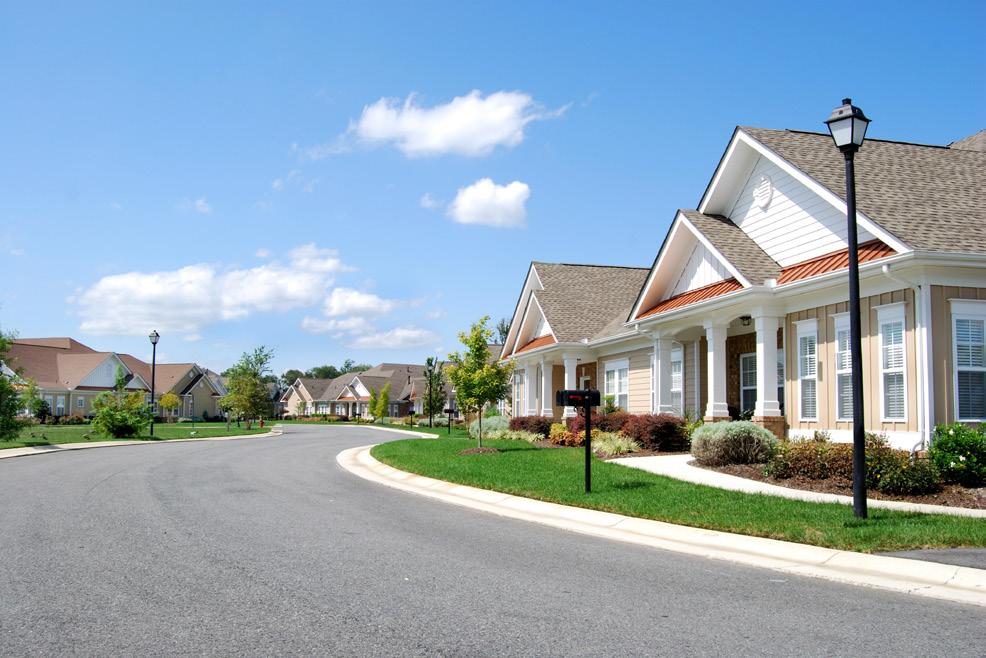
Visit our website: www.AvalonWeb.com Call for a quote: (951) 533 - 6426 Locally owned, nationally accredited, affordable & trustworthy • • • • • The next generation in Homeowner Association Management Offices located in: • Temecula • Canyon Lake • Oceanside Managing the area’s best community associations




ISSUE FOUR 2022 • CONNECT MAGAZINE | 3 TABLE of CONTENTS 5 President’s Message Gina Roldan 6 Editor’s Link A.J. Jahanian, Esq. 10 CAI-CLAC Legislative Week Update Fred Bartz 11 CAI-CLAC Legislative Update: AB 1410 Nordberg | DeNichilo, LLP 12 Crisis: California Community Association Insurance Kimberly Lilley, CIRMS, CMCA, EBP 15 Identifying with Legislators Patrick Gabriele 16 Reserves & Infrastructure Mallory Paproth 18 California Redistricting How and Why it is Important Betty Roth, CCA, AMS, LSM, PCAM 21 The Anonymous Chef: White Bean Ceviche 22 Advertiser Index Follow Us! CAI Board Leader Certificate Training and Recognition for Your Board Complete the CAI Board Leader Certificate Course to receive your certificate and be recognized in your community and on the CAI website. Learn more www.caionline.org/BoardLeaderCertificate
WWW.CAI-GRIE.ORG
EXECUTIVE COMMITTEE
President
Gina Roldan, Bemus Landscape, Inc.
President-Elect
Ty Jaglowski, Environmental Concepts Landscape Management, Inc.
Vice President
Robert Riddick, CMCA, Sunnymead Ranch PCA
Secretary
Jessica Sedgwick, CMCA, AMS, Golden Rain Foundation
Treasurer

Patrick Gabriele, Estates at Canyon Crest Riverside, Inc
Past-President
Nick Mokhlessin, Everthrive Landscape
BOARD DIRECTORS
Adam Armit, Harvest Landscape Enterprises, Inc.
Greg Borzilleri, Accurate Termite & Pest Control
Tim Peckham, CMCA, AMS, PCAM, Powerstone
Property Management
Betty Roth, CMCA, AMS, LSM, PCAM, Heritage Lake Master Association
COMMUNICATIONS COMMITTEE
Committee Co-Chair and Editor in Chief
A.J. Jahanian, Esq., Beaumont Tashjian
Committee Co-Chair
Daniel C. Heaton, Esq., Nordberg | DeNichilo, LLP
Committee Members
Matthew A. Gardner, Esq., Richardson|Ober|DeNichilo, LLP

Mallorie Hall, CMCA, AMS, Associa-PCM, AAMC
Kimberly Lilley, CMCA, CIRMS, Berg Insurance Agency
Gina Roldan, Bemus Landscape, Inc.
Christy Towner-Quesada, CMCA, AMS
Eric Zarr, CMCA, AMS, FirstService Residential, AAMC
CHAPTER STAFF
Administrative Assistant
Elda Pfitzinger, CAI-Greater Inland Empire
All articles and paid advertising represent the opinions of authors and advertisers and not necessarily the opinion of either Connect or the Community Associations Institute–Greater Inland Empire Chapter. Information contained within should not be construed as a recommendation for any course of action regarding financial, legal, accounting or other professional services and should not be relied upon without the consultation of your accountant or attorney.
Connect is an official quarterly publication of Greater Inland Empire Chapter of the Community Associations Institute (CAI–GRIE). The CAI–GRIE Chapter encourages submission of news and articles subject to space limitation and editing. Signed letters to the editor are welcome. All articles submitted for publication become the property of the CAI–GRIE Chapter. Reproduction of articles or columns published permitted with the following acknowledgment: “Reprinted with permission from Connect Magazine, a publication of the Greater Inland Empire Chapter of the Community Associations Institute.” Copyright © 1998–2022 CAI-Greater Inland Empire Chapter.
4 | CONNECT MAGAZINE • ISSUE FOUR 2022 MAGAZINE Connect
THE GREATER INLAND EMPIRE OF CAI
A PUBLICATION OF
CONTACT Advertising, Articles or Correspondence CAI-GRIE Chapter Headquarters 5029 La Mart Dr, Ste A • Riverside, CA 92507-5978 (951) 784-8613 • info@cai-grie.org CAI-GRIE Chapter CAI-GRIE.org General Counsel • ADA & DFEH Compliance • CC&R & Byla w Amendments • Architectural Matters • Contracts & Insurance • Elections & Recalls • Emplo yment La w • Legal Opinions Assessment Collection • Timely Sta tus Reports • Responsive Paralegals • Collectibility Analysis • Judicial or Non-Judicial Foreclosures • Money Judgment La wsuits • Small Claims Assistance • Post Judgment Recover y Toll Free 833.938.1877 AttorneyforHOA.com Ser ving Orange County, San Diego County, Inland Empire and Coachella Valley Community Legal Advisors Inc. COMMUNITY ASSOCIATION ATTORNEYS Expertise. Focus. Solutions. Put the leading bank for community association management companies to work for you. cit.com/cab Let’s get started. Brendan Concannon VP, Regional Account Executive 619.261.6643 | Brendan.Concannon@cit.com Jolen Zeroski, CMCA VP, Regional Account Executive 213.604.1746 | Jolen.Zeroski@cit.com © 2022 First-Citizens Bank & Trust Company. All rights reserved. CIT and the CIT logo are registered trademarks of First-Citizens Bank & Trust Company. MM#10908
PRESIDENT’S MESSAGE
GINA ROLDAN BEMUS LANDSCAPE, INC.


Iwant to start off by thanking CAI-GRIE membership and Board of Directors for allowing me to serve as your 2022 president. We have had some valleys that we had to walk through, but true to who you all are, we reached the mountain top. We “rose up.” We are coming close to the end of this year and I am excited to see what our new Executive Director will bring to CAI-GRIE. The task force worked diligently to bring on a candidate who would deliver on all areas that are important for the growth of the chapter.
I am going to ask you to please look into being on a committee, to help out in areas needed. We are only as strong as the person standing next to us. As I look back on this year, I feel honored to have been guiding the ship. I feel proud of all of the volunteers who just stepped up. The volunteers who go above and beyond. Your efforts have not gone unnoticed.
Now that 2023 is on the horizon it’s time to come together and “Rise Up.” Let’s not wait to react, let’s be proactive. Ask questions on where you can fill in. Submit those articles, attend the events and be proud to tell people about our organization. Acts of kindness can make a happier place for everyone. Acts of kindness can boost confidence, and encourage others to do the same. So let’s contribute to being a positive community.
CAI–GREATER INLAND EMPIRE
The CAI–Greater Inland Empire (GRIE) Chapter hosts educational, business and social events that provide the Chapter’s Business Partners various opportunities to promote their companies’ products and services to Community Association owners and managers serving the Community Association Industry. It is expected that all participants in Chapter events – whether they be educational, business or social – will conduct themselves in a professional manner representative of their business or service organization so as not to detract from the experience of others seeking to benefit from their membership in the Chapter. For more information, visit cai-grie.org
ISSUE FOUR 2022 • CONNECT MAGAZINE | 5
“Now that 2023 is on the horizon it’s time to come together and “Rise Up.” Let’s not wait to react, let’s be proactive.”
t’s hard to believe that we are in the throes of the holidays and another year is closing out. With this final issue of Connect magazine for 2022, we hope to provide you with more valuable insights from our contributing authors, which will give you the tools you need to operate and manage a successful, thriving community.
In this Connect magazine edition, you will find helpful tips for preparing reserve studies and ensuring that association infrastructures are properly maintained and protected. You will also find a critical legislative update, and information on the passage of a new law that may impact your community. Additionally, having just finished a mid-term election year, please see inside for information on California redistricting, and how it impacts our state, county and local elections.
As always, it has been my sincere pleasure to serve as your Editor of Connect magazine for the year 2022. I look forward to many more years of health, happiness and success for our Greater Inland Empire CAI chapter.

A.J. Jahanian, Esq. is an associate attorney with Beaumont Tashjian who devotes his career to serving common interest developments. He can be reached at ajahanian@HOAattorneys.com


6 | CONNECT MAGAZINE • ISSUE FOUR 2022 D a m o n Ja w i t z , C MC A , C C A M D i v i s i o n P r e s i de n t damon.jawitz@managementtrust.com 7 1 4 6 1 9 5 7 3 6 managementtrust.com Community management. Built differently. We are 100% employeeowned. That means that The Management Trust has an unrivaled 100% vested interest in your success. We are simply motivated to think differently. With a local office
Corona, we’re
big.
small. We’re just right, for you!
in
not too
Not too
I
EDITOR’S LINK THE RECOGNIZED AUTHORITY IN COMMUNITY ASSOCIATION LAW FioreLaw.com (877) 31-FIORE A Professional Law Corporation > Inland Empire > Orange County > Coachella Valley > San Diego County
A.J. JAHANIAN, ESQ. BEAUMONT TASHJIAN
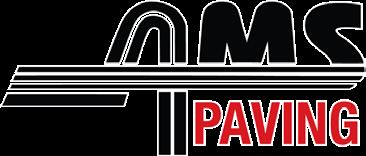








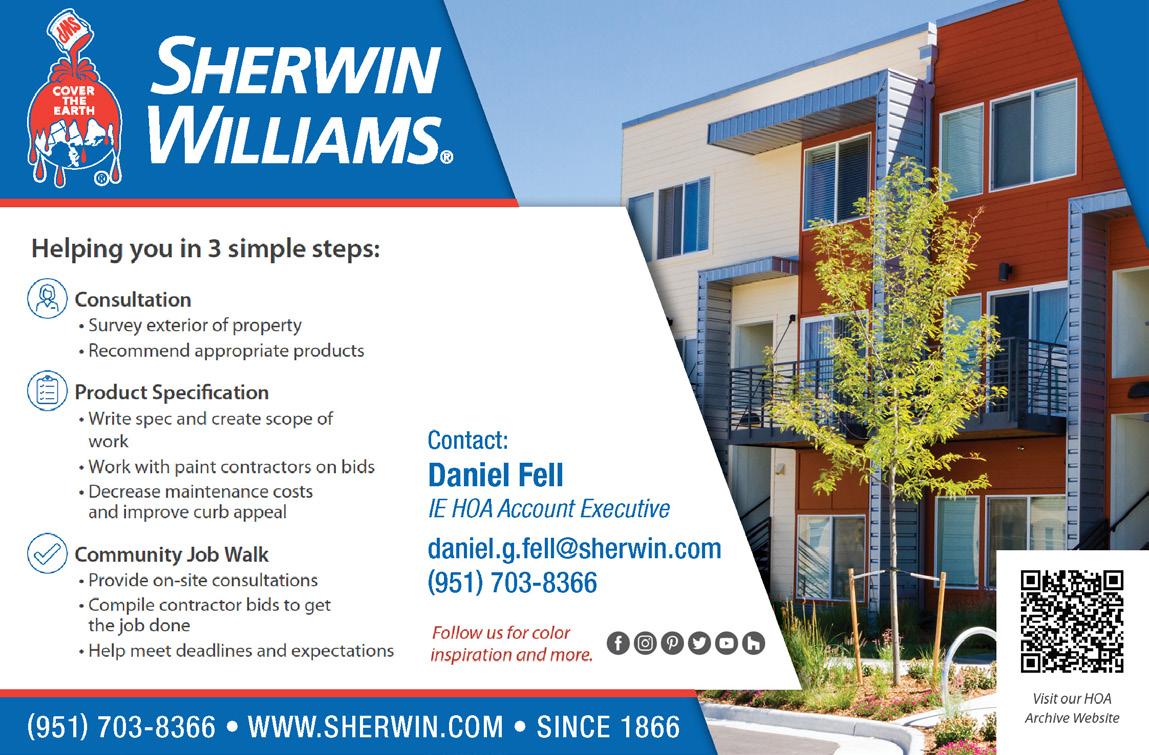
ISSUE FOUR 2022 • CONNECT MAGAZINE | 7 Honesty, Quality, Integrity. Since 1981 these guiding values have allowed AMS Paving to become the #1 choice for community associations in Southern California. Our Services: • Asphalt Repair, Patching & Crack Seal • Asphalt Removal & Replacement • All types of Slurry Seals ADA Compliance 800.357.0711 ● amspaving.com ● Lic: #415436


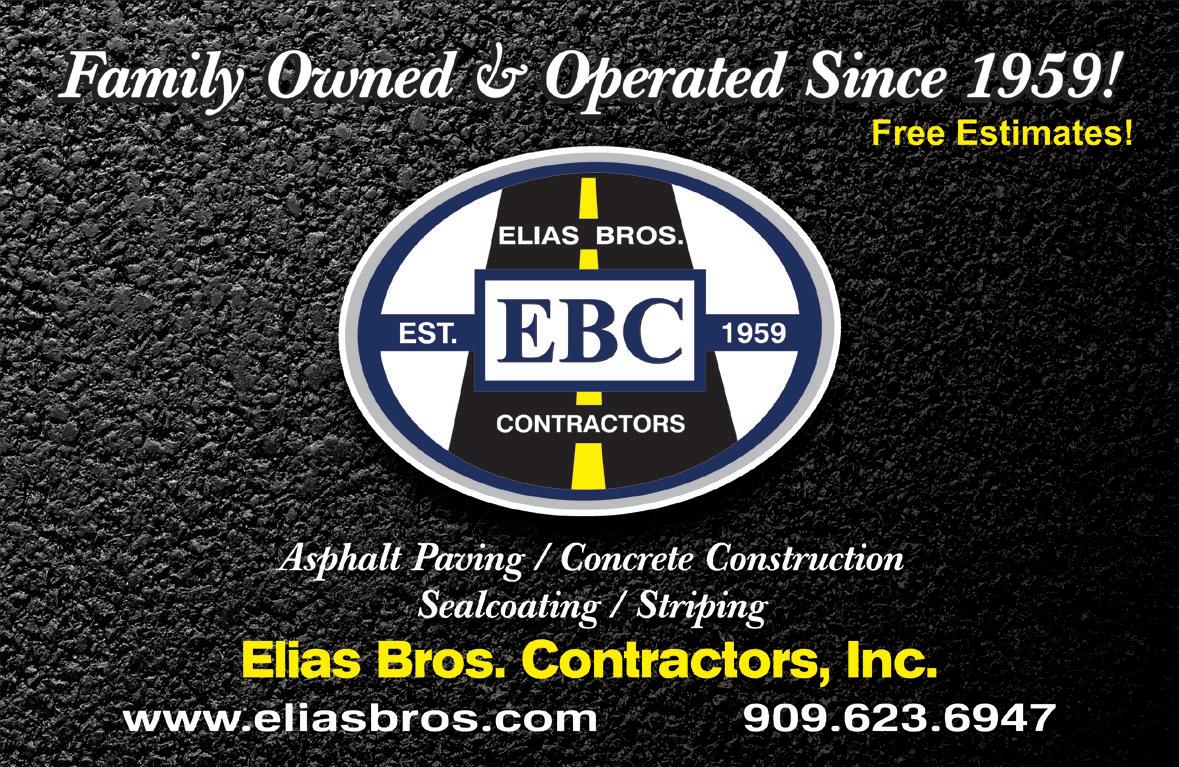
ISSUE FOUR 2022 • CONNECT MAGAZINE | 9
BY: FRED BARTZ
LEGISLATIVE WEEK CAI-CLAC Update


Most of us know that our state laws come out of Sacramento, however, we have very little understanding as to the actual legislative process. CAI-CLAC Legislative Week provided many of us with some insight as to how it works. The first thing we learned about was the process by which an idea or issue turns into a bill and eventually, enacted law. There are many things which happen behind the scenes that are part of the process. First, there may be upwards of some 2,500 proposed laws introduced. If there are so many proposed laws, how can 80 members of the Assembly, and only 40 members of the Senate, have a good handle on them?
One way is when our legislators hear from their constituents either in support or opposition of a particular proposed law. Legislative Week gave those who participated in their Chapter’s meetings with legislators or members of the legislator’s staff an opportunity to hear comments from us, either in support or opposition, regarding a particular issue.
In the case of our CAI Chapter, it was very impressive to hear questions from legislators or members of the legislator’s staff. The staff members were taking lots of notes to communicate back the views we provided. They were also impressed to see over 30 people in the Zoom meetings. I was truly impressed with the interest of these staff members, and I look forward to next year’s Legislative Week.
10 | CONNECT MAGAZINE • ISSUE FOUR 2022
AB 1410
BY: NORDBERG | DENICHILO, LLP
LEGISLATIVE CAI-CLAC Update:

In what may be a record, only one piece of legislation specifically addresses community associations in California this year. AB 1410 (Rodriguez) started out as one of the most draconian bills aimed at California’s community associations that might have ever been introduced. It was even nicknamed by some as the “I hate HOAs bill.” However, with the work of CAI’s California Legislative Action Committee, the bill that ultimately was enacted has little impact on associations and is much more easily manageable.
AB 1410 impacts California’s community associations in three ways. In what is perhaps the most significant change, the legislature continues its efforts to create affordable housing by creating additional rental opportunities. AB 1410 bans enforcement of any restriction in an association’s governing documents that prohibits the rental or leasing of a portion of an owner-occupied separate interest for a period of more than 30 days. The key to this part of the bill is that it only applies to owner-occupied units, essentially permitting roommates, so long as the rental is for a period of at least thirty days. It does not impact an association’s ability to restrict rentals of properties that are non-owner occupied.
AB 1410 also expands on the prior law that prevented an association from taking any enforcement action against an owner for failing to water in times of Governor-declared drought. Under the
new law, an association is prohibited from taking any enforcement action, excluding assessment collection, during a declared state of emergency if the nature of the emergency giving rise to the declaration makes it unsafe or impossible for the owner to prevent or fix the violation. California is almost always in some form of declared state of emergency. However, not many of the declared states of emergency make compliance with an association’s governing documents unsafe or impossible. Given that reality, it is unlikely that this provision will have a significant impact on community associations in the state.
Lastly, AB 1410 expands on the legislature’s previous efforts to protect free speech rights in associations, by preventing an association from prohibiting an owner or resident from using social media or other online resources to discuss any of the following, even if the content is critical of the association or its governance: (i) Development living; (ii) Association elections; (iii) Legislation; (iv) Election to public office; (v) The initiative, referendum, or recall processes; or (vi) Any other issues of concern to members and residents. In addition, the law states that an association shall not retaliate against a member or a resident for exercising any of the rights to peacefully assemble and freely communicate with one another and with others with respect to common interest development living or for social, political, or educational purposes, whether in person, or on social media. Despite the right of a resident or owner to express themselves on social media, the bill makes clear that associations are not required to provide owners access to the association’s websites or social media accounts.
ISSUE FOUR 2022 • CONNECT MAGAZINE | 11
CRISIS: California Community Association Insurance
Anyone living in California over the last five years has seen the dramatic increase in property losses caused by wildfire. Some say that since 2017 wildfire losses have equaled a dollar figure of two Northridge Earthquakes. Carriers that used to have money in reserves to fall back on in a “bad claims” year have fewer and fewer of those dollars, because every year in California seems to be a bad claims year.
Admitted insurance carriers in the state of California file their rates with the California Department of Insurance in order to be a part of the “traditional” insurance market in the state. But these approved rates limit how much a traditional market carrier can adjust their premiums to make up for large losses in their book of business. Because of this inability to rate for the real cost of wildfire risk, carriers in the traditional market are opting to pull out of the market entirely. Remember, insurance carriers are not charities. They are a business and need to make sound business decisions. This leaves a large number of associations in the hands of the Excess and Surplus (E&S) market, which has more agility, and fewer regulations. The California Department of Insurance really has no power over how they do business, unlike the traditional market, which can make it harder to address injustices, as well as making the premiums offered more subject to supply and demand market forces.
With so many wildfire losses, the supply of carriers willing to write policies has gone down, and continues to go down. If a traditional carrier is willing to accept the risk, they are pushing their rates to the top of their approval range, often limiting the amount of coverage, and demanding high deductibles. When a $40,000 premium for an annual policy becomes $455,000 the next year, with no indication of whether it will stay there, or even increase the subsequent year, the association’s response is usually, “We can’t afford that.” But, given the alternatives, these associations cannot afford NOT to. Not insuring puts the association in violation of their CC&R and opens up the association to a Directors and Officers Liability claim (D&O). It will also create a lack of financing for those looking to buy into the association. Fannie Mae and Freddie Mac will not back loans where an association is in violation of their governing documents, ESPECIALLY the insurance provisions. That means that those who can no longer afford to live there because of the increased costs of insurance, cannot find anyone to buy their home, potentially creating a different kind of financial crisis for the community association.
When we come to the question of what there is to do about all of this, flexibility and advocacy are key. Flexibility, because finding ways of helping the association obtain financing for the increased premium or rewriting governing documents for townhome-style condominium associations in order to allow them access to HO-3 policies instead of

12 | CONNECT MAGAZINE • ISSUE FOUR 2022
BY: KIMBERLY LILLEY, CIRMS, CMCA, EBP, BERG INSURANCE AGENCY
the usual HO-6 policies can help the associations get through the next few years. Advocacy, because something has to change.
Community Associations Institute’s California Legislative Action Committee (CAI-CLAC) has an Insurance Task Force that has been working on the issue since early 2021, gathering information, setting up meetings with the Department of Insurance, leading calls to action, making comments on proposed regulations, and attending hearings regarding updates to the CA FAIR Plan. They have also been tracking and influencing legislation that might provide opportunities for relief.
California is in crisis. And it won’t be over any time soon. Making sure that we are communicating clearly about the issue is one of the

best things we can do. The more we vilify the insurance companies, the more they leave the marketplace and reduce the supply of insurance, pushing up the cost. The best thing we can all do is to actively reduce the risk of wildfire in our communities, which will ultimately reduce the amount of wildfire damage, increasing accessibility to insurance in the state. We need to speak up, share stories and solutions. We can help each other through this.
 Kimberly Lilley, CIRMS, CMCA, EBP is the Director of Business Development for Berg Insurance Agency and the Chair of CAI-CLAC’s Insurance Task Force. She may be reached at kimberly@berginsurance.com
Kimberly Lilley, CIRMS, CMCA, EBP is the Director of Business Development for Berg Insurance Agency and the Chair of CAI-CLAC’s Insurance Task Force. She may be reached at kimberly@berginsurance.com
ISSUE FOUR 2022 • CONNECT MAGAZINE | 13
“The best thing we can all do is to actively reduce the risk of wildfire in our communities, which will ultimately reduce the amount of wildfire damage, increasing accessibility to insurance in the state.”

IDENTIFYING with LEGISLATORS
BY: PATRICK GABRIELE, HOMEOWNER LEADER, ESTATES AT CANYON CREST RIVERSIDE, INC.
Many years ago, we moved and purchased a home in Riverside. We didn’t think much about it at the time; however, we were part of a HOA. As issues surfaced and presented themselves, we reached out to our local city council representatives for help. We found this to be very rewarding and successful. As a member of the LSC (Legislative Support Committee) we have been part of Legislative Day at the Capital (Sacramento), and meetings with legislatives in Sacramento and locally. Even Zoom has played a part in this process.
However, when comparing the relationship with the City Council folks versus State legislators, there is no comparison. We need to narrow the distance and develop a positive relationship with our State legislators.
We need to know where they and their staff live. Do they live in a HOA? City Council folks have been invited to HOA board meetings. When was the last time a State legislator was invited to a HOA board meeting? There are basic topics that a State legislator can talk to us about (water usage, electricity usage, etc.). This can open the door to other issues such as CA Fair Plan, AB 1410 and the $97 million surplus. We have 80 State legislators and 40 State senators. It is time to Rise Up and be more active.

ISSUE FOUR 2022 • CONNECT MAGAZINE | 15
“However, when comparing the relationship with the City Council folks versus State legislators, there is no comparison. We need to narrow the distance and develop a positive relationship with our State legislators.”
Patrick Gabrielle is a Homeowner Leader at Estates at Canyon Crest Riverside, Inc. He serves as CAI-GRIE Treasurer and is a member of the CAI-GRIE Legislative Support Committee.
BY: MALLORY PAPROTH, SCT RESERVE CONSULTANTS, INC.
Our HOA world has been rocked by some recent events, and now more than ever, board members and residents are taking a closer look at their reserves. Particularly over the last couple of years, I have been fielding two questions: whether communities have enough money to sustain their current needs, and whether they will be able to weather the storm if something unexpected happens. Just like reserve studies themselves, the answer is never a one-size-fits-all approach. Every common interest development is unique, as are the state of their reserves and the board that runs it. Boards, technologies, and best practices all change. What will not change is a need for knowledge and understanding of the reserve study.

A reserve study is a plan to spend money to “repair, replace, restore, or maintain” the common area in an association. (Cal Civil Code, Davis Stirling §5550) It will identify major assets, reasonable life cycles, probable remaining useful lives, and estimated costs. The Civil Code also states major components included in a reserve study are those with an expected life remaining of 30 years or less. There are many aspects to the above statements that are subjective. I often side with the best answer to the question: what is “reasonable”? It is unreasonable to expect to know everything going on in an association. It is reasonable to maintain best practices, paint and seal on a regular schedule, and seek an expert’s opinion when something unusual or uncommon occurs. It is important to note that not all issues can be foreseen or mitigated through maintenance programs, although many can.
Reserve component reports aim to identify the most likely needed maintenance and replacement costs and lifecycles. By nature, not every expense an association incurs will be connected to a specific component. However, when something out of the ordinary arises, it is a good idea to let your reserve analyst know, so they can make the determination as to the likelihood of future needs. A reserve study is a look forward, not a listing of what has happened in the past. It is meant to by dynamic, to change with the times and the needs of the community.
As California common interest developments age, communities will face different problems. Some of these potential problems include plumbing, electrical, foundation, block walls, or more simply put,



“infrastructure.” What happens when your HOA’s infrastructure is no longer sound and functional? It is never the right path to forego repairs longer than advised. For many communities, they are able to use reserve funds for unanticipated, unexpected expenses, like infrastructure repairs. For others, using reserve funds is not an option because they simply do not have the money available.
You may ask, how can an association protect itself? It is important now, more than ever, to have well-funded reserves, however, that amount is not always easy to determine. Percent-funded is an easier number to identify, but that number alone is missing another major variable, and that is the reserve allocation. To be ready and able to overcome any unexpected expenses, including life-safety issues, maintaining a strong, percent-funded allocation and at least the annual depreciation of the reserve components is critical.
ISSUE FOUR 2022 • CONNECT MAGAZINE | 17
Mallory Paproth of SCT Reserve Consultants, Inc. is an Educated Business Partner, working on her RS designation.
CALIFORNIA REDISTRICTING
HOW AND WHY IT IS IMPORTANT
BY: BETTY ROTH, CMCA, AMS, LSM, PCAM




In order to get an updated count of the country’s population, the U. S. Constitution requires a federal census every ten years. California then uses that census data to redraw the Congressional, State Senate, State Assembly and State Board of Equalization districts based on the population changes.
The independent California Citizens Redistricting Commission (CCRC) uses the new census data to redraw the district boundaries. The final CCRC certified district maps are delivered to the Secretary of State on December 27, 2021.
The boundaries for local district, such as county supervisorial or city council districts, are drawn by those governing bodies and not by the CCRC.
The Secretary of State provided the new CCRC maps to the California State Legislature and to California’s 58 counties who are redrawing precincts within the new district boundaries and then assigning voters to the updated precincts.
There is some possibility that the districts for your Congressional, State Assembly, State Senate and Board of Equalization will change, which means that your representatives in the elected offices may change after the upcoming general election. Voters did vote for

candidates running for office using the new district boundaries as part of the California’s June 7, 2022 Primary Election.
When the new elected officials take office after the November 2022 General Election, the new district lines will take effect. Until then, the existing district boundaries apply and constituents are represented by the current elected officials occupying those offices.
Redistricting creates a fairness in the distribution of the voting population throughout all the districts affected by the redrawing of district lines. Elected officials are able to have a more even distribution of their constituents which helps everyone, the constituents and the election officials.
For more information on California Redistricting, you may use the following links:

Wedrawthelinesca.org
https://www.sos.ca/gov/elections/helpful-resources/redistricting

18 | CONNECT MAGAZINE • ISSUE FOUR 2022
Betty Roth, CMCA, AMS, LSM, PCAM is a Volunteer Leader of the CAI Greater Inland Empire Chapter LSC Committee. She is also a Delegate Member of the California Legislative Action Committee Executive Committee.
The California Legislative Action Committee (CLAC) is a volunteer committee of Community Associations Institute (CAI), consisting of homeowners and professionals serving homeowner associations (HOAs).
CAI is the largest organization in America dedicated to the monitoring of legislation, educating elected state lawmakers and protecting the interests of those living in community associations.
CAI-CLAC is working toward legislative solutions that are right for California homeowner associations. Donating just a Buck A Door (or more!) allows you to participate in the legislative process. Donate today to protect HOA living and your property values.

ISSUE FOUR 2022 • CONNECT MAGAZINE | 19
COMMUNITY ASSOCIATIONS THROUGHOUT
SERVING OVER 13 MILLION HOMEOWNERS IN 55,000+
CALIFORNIA
POWER
SINGLE DOLLAR.
888.909.7403 | office@caiclac.com | caiclac.com THE
OF A
It’s a small amount with a big impact in advocating for California HOA communities. To learn more about CAI-CLAC and the Buck a Door annual fundraiser visit caiclac.com

THE ANONYMOUS CHEF WHITE BEAN CEVICHE
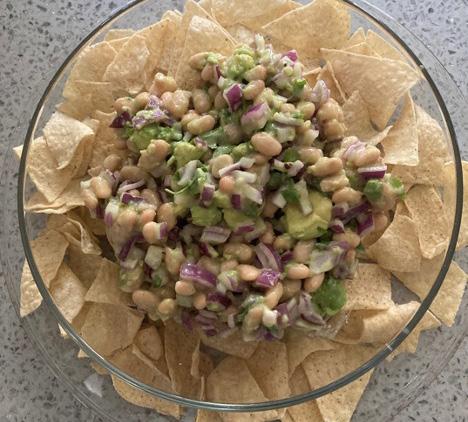

INGREDIENTS:
1 can white beans (Great Northern, Cannellini, etc.), drained Juice of 1 lime

1 Medium/small red onion, diced
1 Avocado, peeled, pitted and cut into ¼-inch cubes ¼ cup roughly chopped cilantro
Salt
DIRECTIONS:
Gently toss all ingredients, adding salt to taste.
Serve with tortilla chips, as a dip, or on top of your favorite nachos.
This recipe was submitted by an anonymous chef, which sparked the idea to create a reoccurring segment in our magazine. If you have a Simple, fun and delicious recipe you’d like to share anonymously, just send it along with some photos to info@cai-grie.org

ISSUE FOUR 2022 • CONNECT MAGAZINE | 21
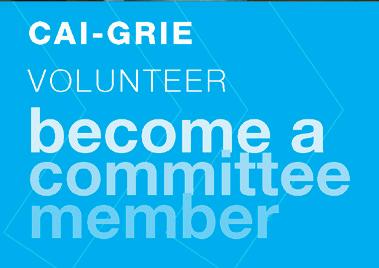




22 | CONNECT MAGAZINE • ISSUE FOUR 2022 Volunteer Today! Advertisers Listed Alphabetically by Company Company Page/Location Avalon Inside Front Cover AMS Paving Inc. ......................................... 7 Bentley Community Management 9 Berding | Weil Inside Back Cover CIT 4 Community Legal Advisors 4 Elias Bros. Contractors, Inc......................... 9 Fiore, Racobs & Powers, A PLC 6 Sherwin Williams ....................................... 7 The Management Trust 6 Tinnelly Law ............................... Back Cover Weldon L Brown Company, Inc. 10 get your brand seen! ADVERTISE In COnnect Magazine visit cai-grie.org
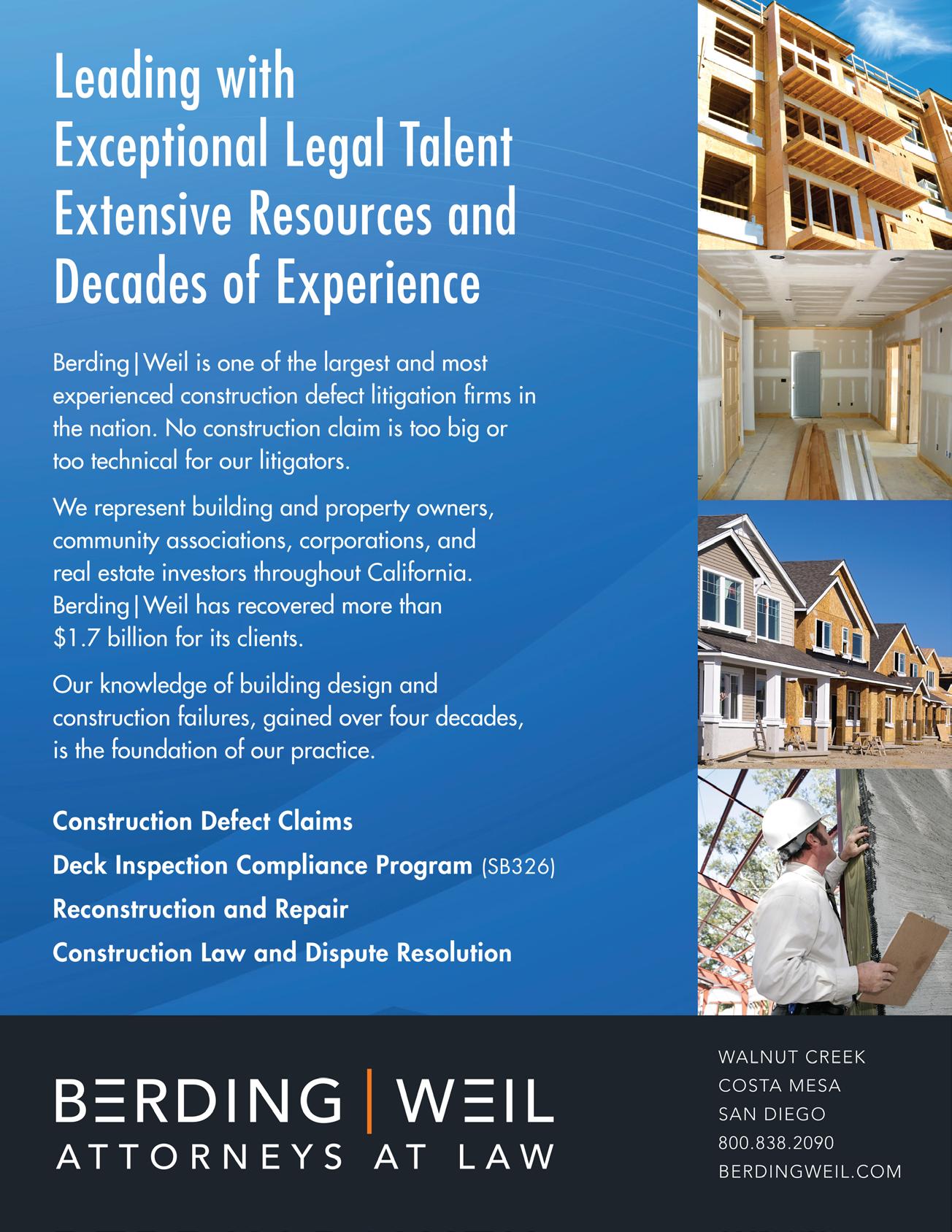
5029 La Mart Dr, Ste A Riverside, CA 92507-5978 info@CAI-GRIE.org www.CAI-GRIE.org


t i n n e l l y l a w c o m a l t e r r a c o l l e c t i o n s c o m f i n d h o a l a w c o m





































 Kimberly Lilley, CIRMS, CMCA, EBP is the Director of Business Development for Berg Insurance Agency and the Chair of CAI-CLAC’s Insurance Task Force. She may be reached at kimberly@berginsurance.com
Kimberly Lilley, CIRMS, CMCA, EBP is the Director of Business Development for Berg Insurance Agency and the Chair of CAI-CLAC’s Insurance Task Force. She may be reached at kimberly@berginsurance.com


























